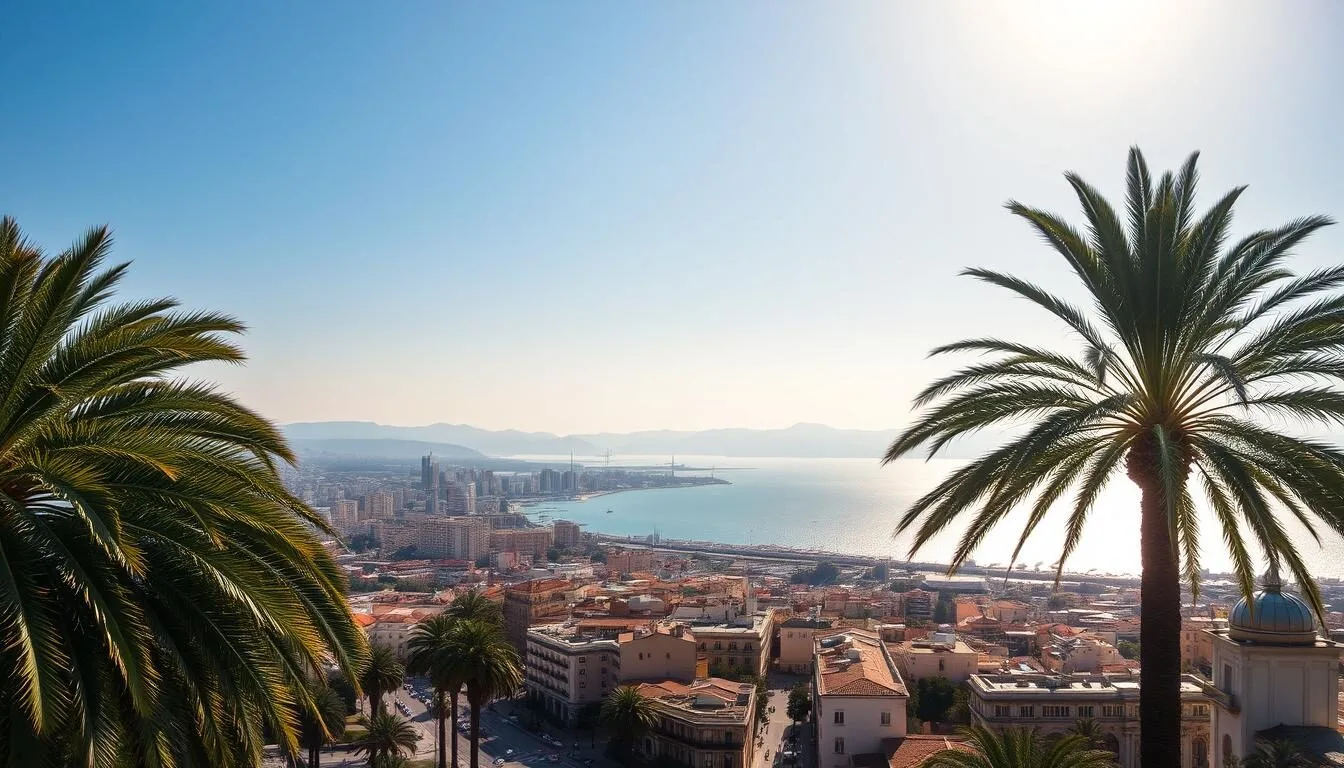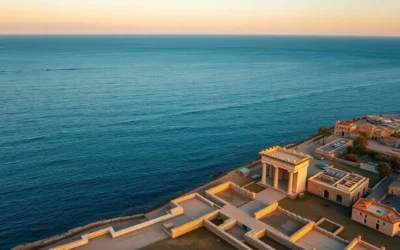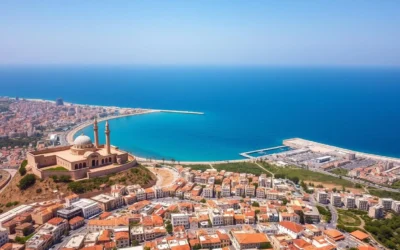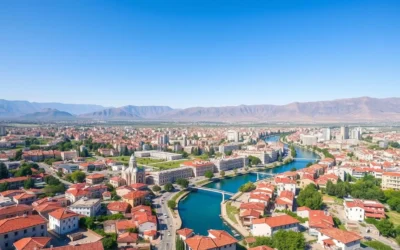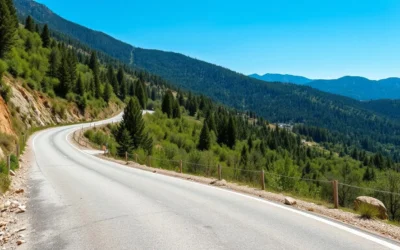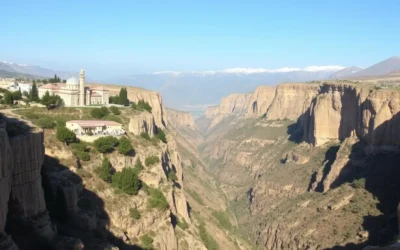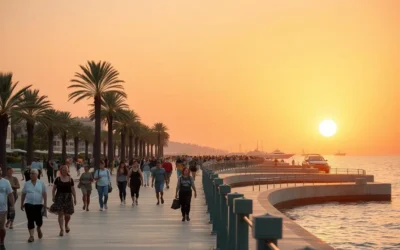✓ Accommodations✓ Flights✓ Rental Cars✓ Tours & Activities
Did you know that Lebanon boasts a Mediterranean climate with four distinct seasons, making it a year-round destination for travelers? Unlike many of its Middle Eastern counterparts, Lebanon’s diverse climate offers a unique experience with each season.
As you plan your trip to Beirut, understanding the local climate is crucial. The spring and autumn months are particularly appealing, with mild weather and beautiful scenery, making them ideal for outdoor activities and sightseeing.
Timing your visit to Lebanon is essential to maximize your enjoyment. Whether you’re interested in trekking, wine tasting, or exploring archaeological sites, the right time of year can make all the difference. This guide will help you determine the best time to visit based on your preferences and interests.
Understanding Lebanon’s Mediterranean Climate
Lebanon’s climate is a fascinating blend of Mediterranean characteristics, influenced by its coastal position and mountainous terrain. As a country nestled between the Mediterranean Sea and mountains, Lebanon’s climate is both varied and fascinating.
Distinct Seasons in Lebanon
Lebanon is one of the few countries in the Middle East that experiences four distinct seasons. This unique characteristic is due to its geographical location on the eastern Mediterranean. The country’s climate ranges from warm summers to cool winters, with spring and autumn offering mild temperatures. Visitors can enjoy a variety of activities throughout the year, from beach trips in the summer to skiing in the winter.
Beirut’s Coastal Weather Patterns
Beirut’s weather is characterized by its coastal location, with the Mediterranean Sea moderating temperatures. However, this can also lead to higher humidity levels compared to inland areas. The temperature in Beirut typically ranges from 25°C to 28°C during the summer, while it’s significantly cooler in the mountainous regions just a short drive away.
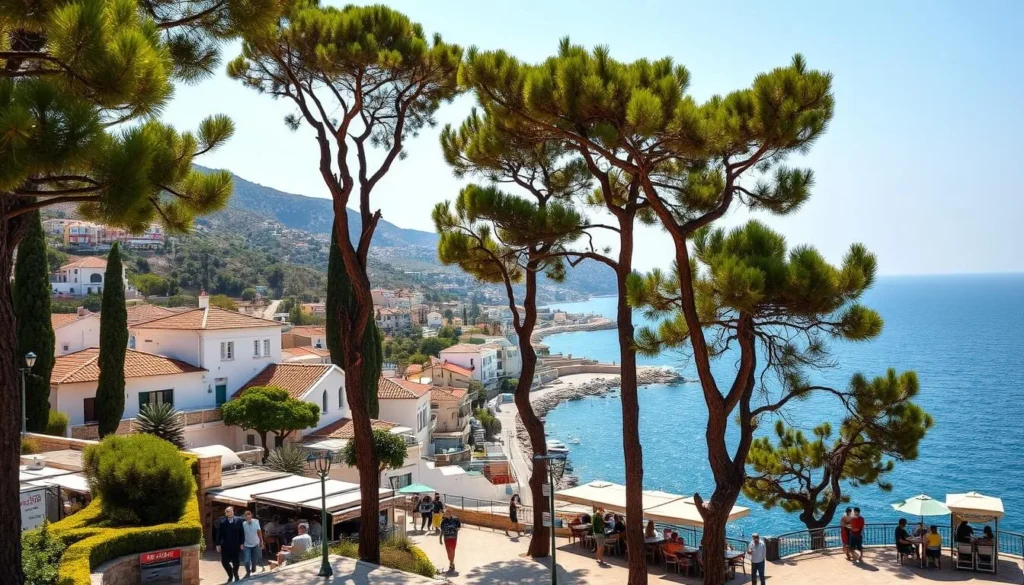
| Season | Temperature Range | Characteristics |
|---|---|---|
| Summer | 25°C – 28°C | Warm, humid |
| Winter | Cool, cold | Rainy, potential snow in mountains |
| Spring | Mild | Floral blooms, greenery |
| Autumn | Mild | Harvest season, comfortable temperatures |
Spring in Beirut: March to May
As the winter chill dissipates, Beirut awakens in the spring, offering a perfect blend of pleasant weather and vibrant cultural experiences. This season is ideal for visiting Lebanon, as the weather is mild and the country is in full bloom.
Temperature and Precipitation Expectations
During the spring months, Beirut experiences a gradual warming trend. In March, temperatures range from 13 to 20°C, with an average rainfall of 90 mm. April sees temperatures between 15 and 23°C, with rainfall decreasing to 50 mm. By May, the temperature ranges from 18 to 25°C, with minimal rainfall of 10 mm. This pleasant weather makes spring a great time to visit Lebanon.
Ideal Spring Activities: Hiking and Sightseeing
Spring is the perfect season for outdoor activities in Beirut. You can enjoy hiking in places like the Kadisha Valley, where the lush green landscapes and blooming wildflowers create a breathtaking scenery. Sightseeing at archaeological sites is also more enjoyable with fewer crowds. Additionally, the Mediterranean coastline is pleasant to visit before the summer crowds arrive.
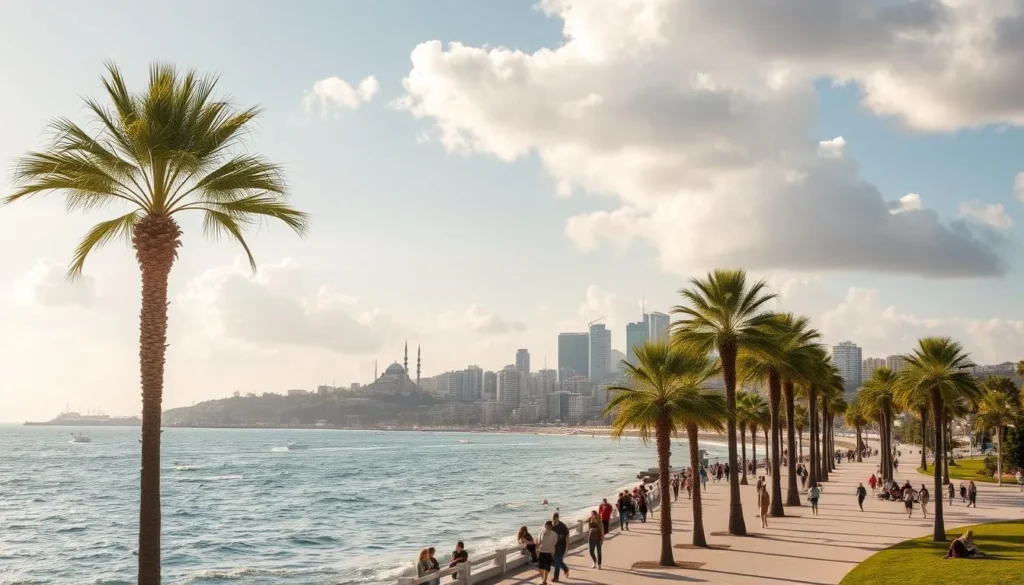
Spring Festivals and Cultural Events
Beirut hosts various spring festivals and cultural events that showcase its rich culture. Visitors can experience these events, which often include special celebrations tied to the season. The pleasant weather and fewer tourists compared to the summer high season make spring an ideal time to visit and explore Beirut’s attractions.
When packing for your spring trip to Beirut, consider the occasional rain showers in March and April, and the warming trend toward May. This will ensure you’re prepared for the varying weather conditions.
Summer in Beirut: June to August
As summer sets in, Beirut transforms into a bustling tourist hub, attracting visitors from around the world with its warm weather and vibrant cultural scene.
Heat and Humidity on the Coast
Summer in Beirut is characterized by high temperatures, often reaching 30°C and above, particularly in July and August. The coastal humidity can make it feel even warmer, so it’s essential to pack accordingly and stay hydrated.
Beach Season and Mediterranean Experiences
The summer months bring Beirut’s beach culture to life, with numerous beaches along the Mediterranean coast offering a range of water activities. Some popular beaches include:
- Raouche Beach
- Manara Beach
- Ramlet el Bayda
Visitors can enjoy swimming, jet-skiing, and other water sports, making the most of the warm weather.
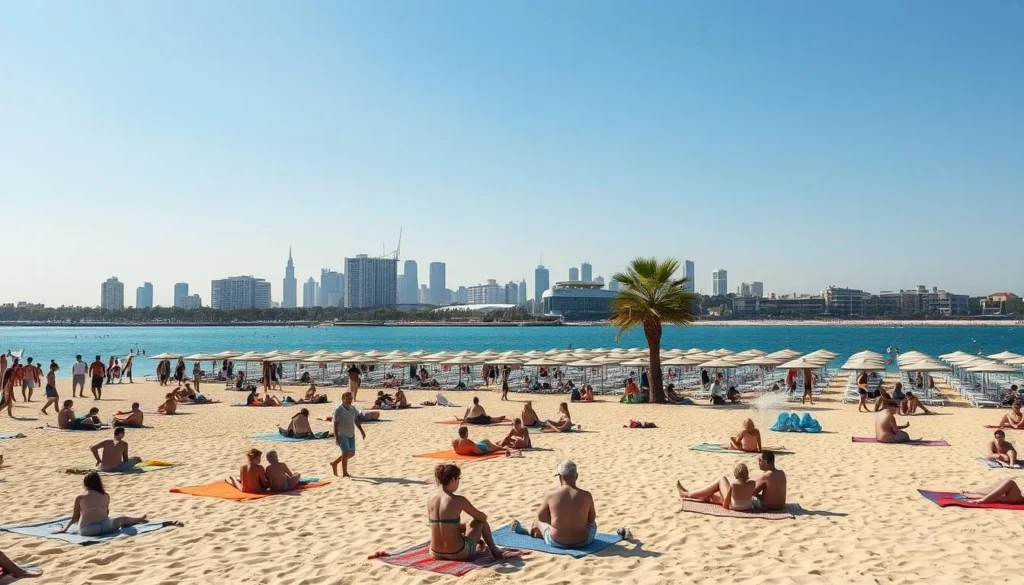
Summer Festivals: Byblos and Baalbeck International Festivals
Summer is also the time for cultural events in Beirut, with the Byblos International Festival and Baalbeck International Festival being two of the most notable. These festivals feature a range of performances, including music, dance, and theater, set against the backdrop of Lebanon’s rich history and culture.
To make the most of your summer trip to Beirut, consider visiting during the early morning or evening to avoid the heat. Don’t forget to pack sunscreen and stay hydrated throughout the day.
Fall in Beirut: September to November
Beirut in the fall is a treat, with mild weather, fewer crowds, and a plethora of cultural events that highlight the city’s rich heritage. As the summer heat dissipates, the city transforms into a vibrant destination, perfect for exploring its many wonders.
Mild Temperatures and Weather Conditions
During the fall, Beirut experiences a gradual cooling, making it an ideal time to visit. The temperatures range from 24-30°C in September, cooling down to 21-28°C in October, and further dropping to 16-23°C in November. While September still feels like summer, October and November bring more moderate temperatures, making outdoor activities even more enjoyable. It’s worth noting that November sees an increase in rainfall, with an average of 110mm.
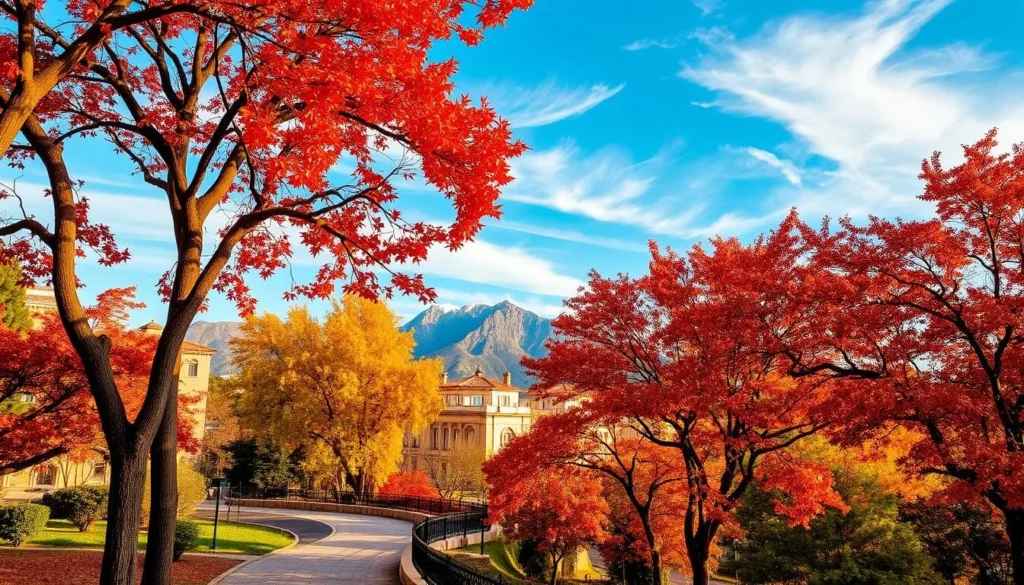
Wine Tasting in the Bekaa Valley
Fall is the perfect season to experience Lebanon’s growing wine industry, particularly in the Bekaa Valley. The harvest season offers a unique opportunity to taste some of the country’s best wines. Visitors can enjoy wine tasting tours and learn about the wine-making process. The region’s vineyards are open to visitors, offering a chance to sample some of the finest Lebanese wines in a picturesque setting.
Beirut International Film Festival and Fall Events
The fall season in Beirut is also marked by significant cultural events, including the Beirut International Film Festival. This event showcases a diverse selection of international and Lebanese films, attracting cinema enthusiasts from around the world. Additionally, the Vinifest, a nighttime wine exhibition and tasting festival, returned with its 13th edition in 2022, offering a unique experience for wine lovers. These events, among others, make fall an exciting time to visit Beirut, with something for everyone to enjoy.
When planning your trip to Beirut in the fall, consider packing layers for the cooler months, especially in November when it can be quite chilly in the evenings. The fall season offers many advantages, including comfortable temperatures and fewer crowds, making it an ideal time for travelers who want to enjoy both outdoor activities and cultural experiences.
Winter in Beirut: December to February
Beirut in winter is a hidden gem, offering a unique blend of cultural experiences and outdoor activities. While the temperatures drop, the city takes on a different charm, making it an attractive destination for travelers looking for a mix of adventure and relaxation.
Rainfall Patterns and Temperature Ranges
Winter in Beirut is characterized by cooler temperatures and increased rainfall. December, January, and February are the coolest months, with average temperatures ranging from 11°C to 19°C. Rainfall is significant, with December and January being the wettest months, receiving around 170mm and 180mm of rainfall, respectively.
| Month | Temperature Range (°C) | Rainfall (mm) |
|---|---|---|
| December | 13-19 | 170 |
| January | 11-17 | 180 |
| February | 11-18 | 150 |
Winter Activities: From City Exploration to Mountain Skiing
Despite the cooler weather, winter is an excellent time to explore Beirut’s historical sites, such as the Roman ruins and the National Museum. For the adventurous, the nearby mountains offer excellent skiing opportunities. You can ski in the morning and enjoy a mild afternoon on the coast, a unique experience in the region.
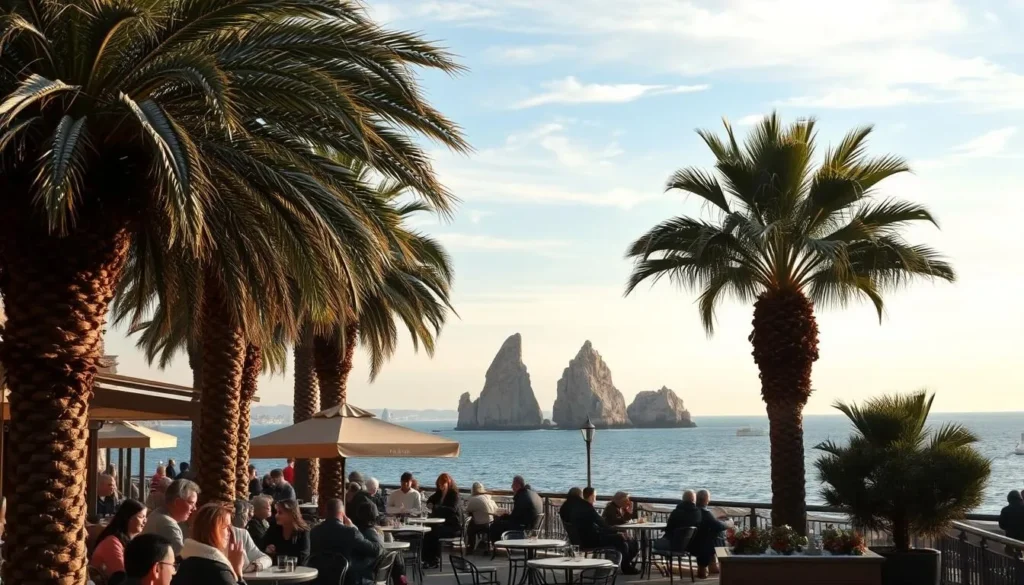
Winter Holidays and Cultural Experiences
Winter is also a time for cultural experiences, with Christmas and New Year’s celebrations adding to the city’s festive atmosphere. Visitors can enjoy the local cuisine in cozy restaurants, explore traditional souks, and visit museums and galleries. With fewer tourists, you can experience the city like a local, enjoying seasonal traditions and holiday celebrations.
Beirut, Lebanon: Best Months for a Weather-Savvy Trip – Final Recommendations
Beirut’s diverse climate means that the best time to visit depends on your preferences and interests. For most travelers, spring (May) and fall (October) offer the ideal balance of comfortable temperatures and manageable tourist crowds.
If you’re an outdoor enthusiast, consider visiting during May-June or September-October for hiking and exploration. Beach lovers might prefer July-August, despite the crowds and heat. For a mix of coastal culture and mountain skiing, December-February is the way to go.
When planning your trip, keep in mind that flight prices and availability can vary with the season. Regardless of when you visit, Beirut’s rich culture, history, and cuisine are sure to leave a lasting impression. Choose the time that best aligns with your preferences, and get ready to experience the best of Lebanese life.
—
The above is subject to change.
Check back often to TRAVEL.COM for the latest travel tips and deals.
